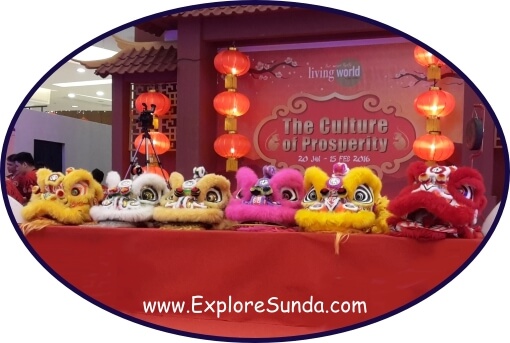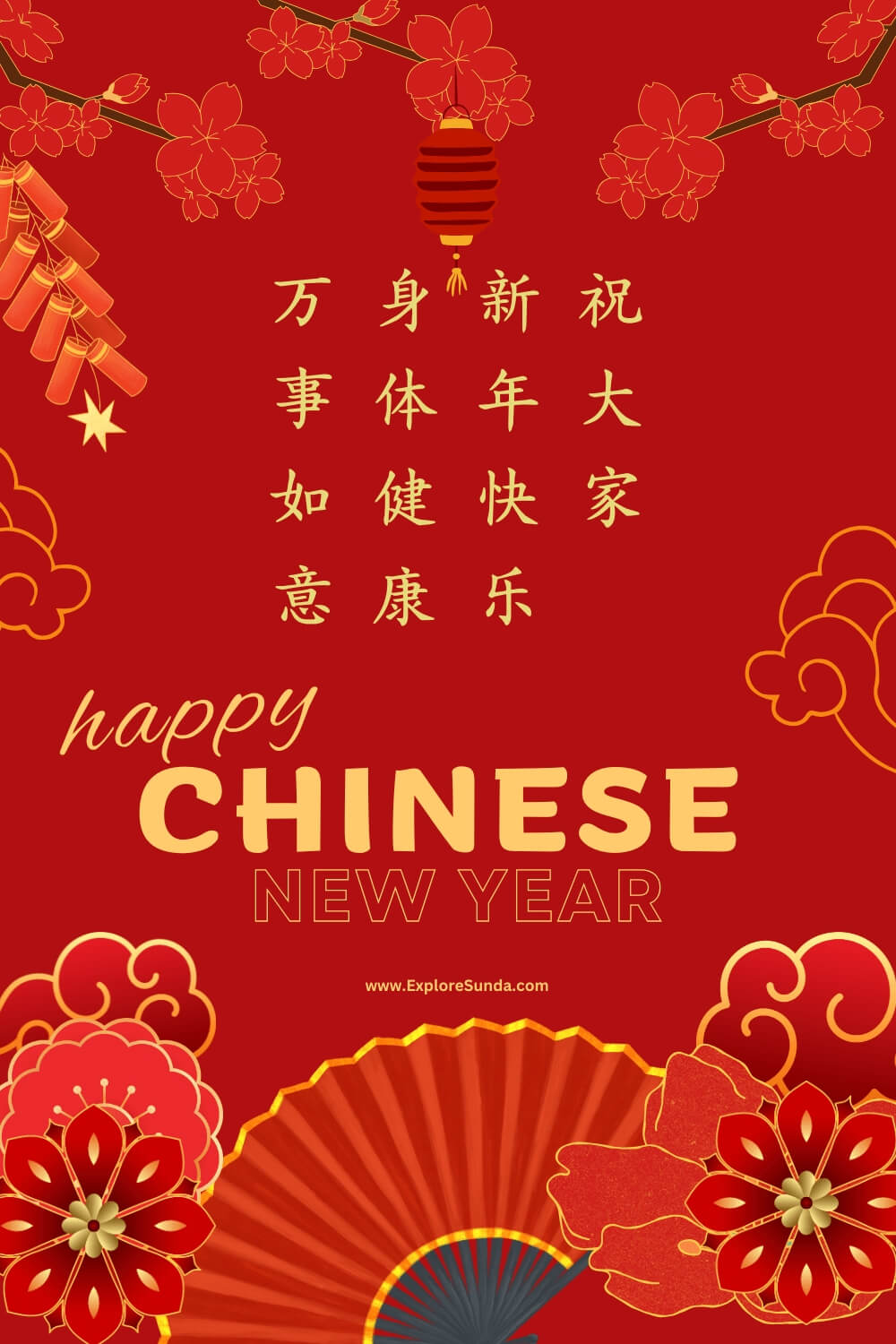- Sunda
- Imlek
IMLEK
The Chinese New Year Celebration in Indonesia
Imlek is a celebration of the Chinese New Year in Indonesia. In four-season countries, it is also known as the Spring Festival – to welcome the spring. Every year, the date of the Chinese New Year Since varies from the Gregorian calendar, since it is based on the lunisolar calendar (a combination of lunar and solar elements, although lunar is more dominant). On January 29, 2025, we celebrate the Chinese New Year 2576.
According to Chinese beliefs, there are twelve Chinese zodiacs: Rat, Ox, Tiger, Rabbit, Dragon, Snake, Horse, Sheep/Goat, Monkey, Rooster, Dog, and Pig. Unlike the Western zodiacs, which change every month during a year, each Chinese zodiac sign is assigned for a year in a twelve-year cycle. Moreover, every Chinese zodiac has five elements: wood, metal, water, fire, and earth. Since the Chinese zodiac is based on astronomy, astrology, and mythology, every combination of the zodiacs and their elements portrays unique characteristics for people born in that particular year. Considering twelve Chinese zodiacs and their five elements take turns yearly, the same combination will only happen every 60 years.
2025 is the time for the Wood Snake, which begins on January 29, 2025, and ends on February 16, 2026.
Imlek is the time for family gatherings and wishes for good health and prosperity. One of the Chinese Indonesian traditions on Chinese New Year's Eve is to have a family dinner. Some continue the festive by praying in the temple. On New Year's Day, the younger family members visit their parents and elders to greet them. It is customary for married couples to give hongbao – a red envelope filled with money – to children and relatives who are still single. It represents the blessings from the elder to the young.
On the day of Imlek, it is customary for people to wear new clothes, typically red ones, to keep bad spirits and bad luck away. Not just for themselves, but people also buy new clothes for their children, parents and elders. As a result, shopping malls often organize sales, including midnight sales. You can find a variety of red clothes, such as batik, dresses, cheongsam, and shirts.
In addition to these imlek traditions, let’s explore special things that only happen during this festive :)
Specials During Imlek
 Special food during Imlek: Dodol Keranjang (Nian Gao).
Special food during Imlek: Dodol Keranjang (Nian Gao). Special performance during Imlek: Lion Dance.
Special performance during Imlek: Lion Dance.One of the foods that is only made and sold during Imlek is basket cakes. We usually call it "dodol keranjang" or dodol China. It is called Nian Gao in Mandarin. This cake is named basket cake because a bamboo basket is used as a mold for the dough. The primary ingredients in this cake are glutinous rice powder and palm sugar. Nowadays, it comes with various additional flavors such as vanilla, chocolate, and pandanus (the extract of pandanus leaves provides a green color and a pleasant smell). The cake can be eaten as is, but many prefer to steam it with shredded coconut or fry it with beaten eggs. The roundness and stickiness of "dodol keranjang" symbolize the closeness and harmony in the family.
During Imlek, two special performances take place: the lion dance or Barongsai in Bahasa Indonesia, and the dragon dance. The Chinese believe that these animals bring prosperity and ward off bad luck. The dragon is typically carried by multiple performers due to its long body.
 Special performance during Imlek: Dragon dance.
Special performance during Imlek: Dragon dance.The lion dance is gaining immense popularity in Indonesia, with many shopping malls inviting it nowadays. The dance involves two men representing the lion under one hood. There are several varieties of this dance, including dancing on tables and poles, as well as performing modern styles like the moonwalk and Gangnam style!
Among them, the pole lion dance, or Barongsai Tonggak in Bahasa Indonesia, is considered the most challenging because the performers must jump and dance on 21 poles of varying heights and ranges.
At the end of the performance, we give hongbao as a gesture of appreciation to the lion and opportunities to take pictures with them. Children love doing it :)
My favorite place to watch pole lion dance performances is at Living World Mall in Alam Sutera, South Tangerang. The group that always performs in this mall is Kong Ha Hong. They won several pole lion dance championships, both national and world championships. Their lions are always expressive and agile, and their performances are always creative and entertaining. They have an LED lion dance, a very bright lion with its body fully covered with LED. They perform various pole lion dance stunts, such as a drunken lion dance, and even the monkey king Sun Go Kong plays with the Barongsai on top of the poles. For the Imlek celebration, the Barongsai will throw candies to the audience from high above the pole in the middle of the performance. These candies symbolize wishes for sweet or good things in life. At the end of the pole lion dance show, they often perform the Gang Nam lion dance. One thing is for sure: their lions always come in pride, they never come alone :)
Look at the crowd! People are eagerly waiting for each of their performances.
 A Pole Lion Dance performance always attracts crowds.
A Pole Lion Dance performance always attracts crowds.I have compiled their performances over the years and put some of the best pictures in sliders below. I hope you enjoy watching their performance as much as I do. :)
Recent Articles
-
Roro Jonggrang: A Tale Etched in the Stones of Prambanan Temple
Nov 05, 25 11:52 PM
Unravel the ancient Javanese legend of Roro Jonggrang that bridges myth, devotion, and the grandeur of Prambanan. -
Discover the Vibrant Celebration of Imlek in Indonesia!
Jan 13, 25 03:24 AM
The Chinese New Year of 2576 will be celebrated on January 29, 2025. Discover the special things in this Imlek festival! -
The Site Map of ExploreSunda.com
Nov 26, 24 10:40 PM
A thorough site map to help you browse through the Explore Sunda site.




















